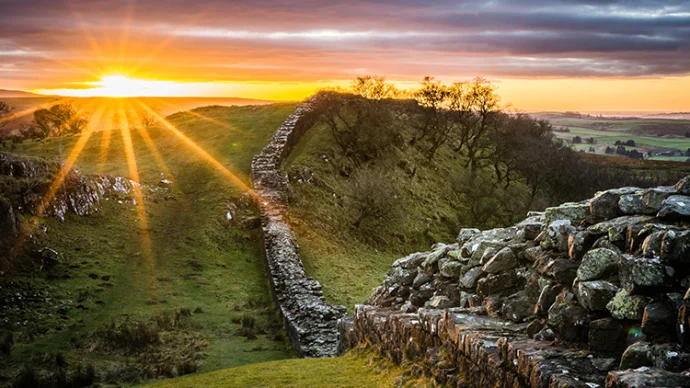
About Dunstanburgh Castle
Originally built as a symbol of baronial power and status, Dunstanburgh Castle is now a striking ruin on the coast of Northumberland.
Dunstanburgh Castle history
Thomas, 2nd Earl of Lancaster began construction of Dunstanburgh Castle in 1313 and by 1322 it was completed. Lancaster was one of the richest and most powerful lords in England, second only to the king, and was at the time in the midst of a fervent dispute with his cousin Edward II. In 1312, he had been the ringleader of the group that captured and killed Piers Gaveston, a much-hated favourite of the king.
In a demonstration of his authority, Lancaster built the vast fortress of Dunstanburgh Castle, perhaps seeking to have a northern refuge far from the king’s forces. This effort would be in vain however, as in 1321 civil war broke out between Edward II and his barons, and in 1322 on his way to Dunstanburgh the Earl of Lancaster was captured and executed at Pontefract Castle.
The castle then passed into royal hands and was later expanded and renovated by John of Gaunt, who following the Peasants’ Revolt of 1381 sought better security at his castles. He transformed the vast gatehouse into a keep, and built a new entrance on the western flank, complete with barbicans and a drawbridge.
The demise of Dunstanburgh Castle occurred after the Wars of the Roses however, when the castle was twice besieged by the Yorkists, eventually falling to them in 1464. Following this the castle largely fell to ruin, with its location not deemed strategic enough for further development.
Dunstanburgh Castle today
Today, Dunstanburgh Castle is managed by English Heritage and is open to the public. The huge twin-towered keep may be viewed, originally built by the Earl of Lancaster in the 14th century, alongside some of the castle’s sprawling curtain wall. Dotted along it are a number of imposing towers, including the Constable’s Tower, Lilburne Tower, and Egyncleugh, that give an insight into the scale of the vast fortification.
Situated high atop a coastal bluff, the views from Dunstanburgh Castle are also stunning, reaching northwards to Embleton Beach and its rival castle of Bamburgh. With information boards giving the site’s fascinating role in Britain’s medieval past, Dunstanburgh Castle is an atmospheric visit for all ages.
Getting to Dunstanburgh Castle
Dunstanburgh Castle is located near Craster in Northumberland, and can be reached via a picturesque walk from the village along the coastline. Craster is 8 miles northeast of Alnwick following the B1340 off the A1, and parking is available in the village, from which the 1.3 mile walk follows the coast to the site.
The nearest train station is Alnmouth, 7 miles from Craster, from which the Arriva service X18 may be taken into the village, alighting at the Harbour stop.
Featured In

10 of the Best Historic Sites in Northumberland
From the ruined Lindisfarne Priory on Holy Island to the mighty Hadrian's Wall, Northumberland's historic sites attest to its fascinating past.




















